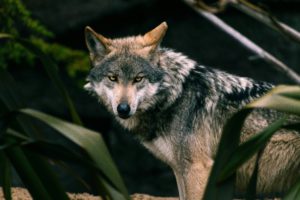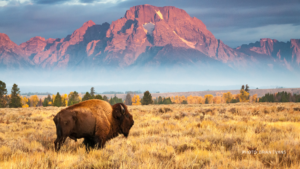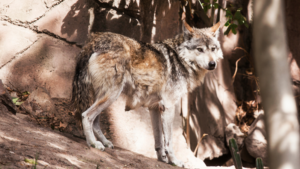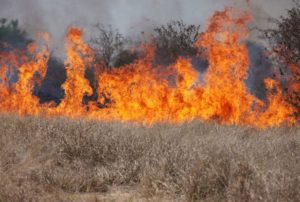By Greta Anderson, OpEd for the Santa Fe New Mexican
(June 22, 2024) Most New Mexicans know about Asha, the Mexican gray wolf who made two forays into Northern New Mexico and outside of the bounds of the Mexican Wolf Experimental Population Area, that arbitrary region where lobos are allowed to live south of Interstate 40.
Asha traveled north in fall of 2022 and was captured near Angel Fire in January 2023; shortly after being rereleased by herself in Arizona in June 2023, she headed right back toward Northern New Mexico.
When she was captured near the Valles Caldera National Preserve for the second time in December, the U.S. Fish and Wildlife Service said the move was for her safety and well-being. They placed her in captivity with two brothers named Horizon and Arcadia, and she chose her mate in March, raising everyone’s hopes that she was pregnant. However, Asha didn’t end up having puppies this spring, and now she is due to be released again into the wild.
The question is, will the agencies send her back out alone again? In New Mexico, there’s no policy against releasing captive-born adult wolves, just a preference to rely on the cross-fostering of puppies to improve the genetics of the wild population. But what about improving Asha’s chances of staying wild and in one place again? Releasing her with her captive-born — now packmates — Horizon and Arcadia will help her localize somewhere within the Mexican Wolf Experimental Population Area and likely stop her from wandering north again.
Setting the whole pack free again also would show the agencies care about the well-being of wolves, whether they are useful to the program by providing offspring or not. Wolves are highly social, family-oriented animals and form friendships and share knowledge. Asha can teach Arcadia and Horizon how to be successful in the wild, surviving on wild prey and avoiding humans as she did throughout her former days of freedom.
Their wolf family has a great chance at thriving together, and it’s up to the humans to let them try it. The New Mexico Department of Game and Fish and the U.S. Fish and Wildlife Service need to release the Caldera Pack together, in the wild, where wolves belong.
Originally posted by the Santa Fe New Mexican





